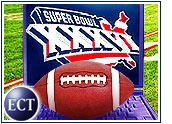
Many brick-and-click Web merchants are following a basic recipe for success this holiday season, according to a new report from the Yankee Group.
According to “Performance Enhancing Strategies for OnlineRetailers,” such offline mainstays as JCPenney.com, LandsEnd.com, andSharperImage.com will fare particularly well this holiday season, whilepure-plays eToys, Drugstore.com, PlanetRx.com and Vitaminshoppe.com are poised for a fall in 2001.
Dot-Com Divide
Paul Ritter, Director of Online Retail Strategies for the Yankee Group, maintains that positive gross margins will be a major dividing line between this year’s winners and losers. All of the companies expected to succeed this holiday showed positive gross margins ranging from35 to 65 percent.
“Without positive gross margins it’s very difficult to have a sustainablebusiness. Pets.com had high shipping costs for such low value orders thatthey operated at a substantially negative gross margin,” Ritter told theE-Commerce Times.
On the other hand, SharperImage.com is able to post high gross margins because many of the products it sells on the Web are not available elsewhere, Ritter said.
Surfers, Buyers
Although traffic is another critical factor, getting visitors to enter an e-tail site is not enough to succeed. Web trafficis only half the equation, said Ritter.
“It’s important to have both sustained visitor traffic as well as high or good conversion rates. One without the other is generally not sufficient,” Ritter noted. “Although JCPenney had 1.6 million fewer visitors than Best Buy in November, the company had half a million more buyers because its conversion rate was three times higher than Best Buy’s.”
According to the Yankee Group, the average conversion rate for e-tailersis 1 percent. In contrast, the conversion rates for the companies Yankee placed in the winner’s circle are well above average, running at 10 to 15 percent.
Web Reasoning
Two other factors central to dot-com success are “tangible value proposition” and “overall Web experience,” the report said.
In other words, Web merchants must have products that customers want, and they must be able to convince customersthat the Web is the best place to buy them.
Ritter said, “A lot of companies sell online without providing a convincing reason forcustomers to purchase either online at all or on their Web site versus acompetitor’s. In the case of Furniture.com, they had a product whose valueproposition was not easily conveyed over the Web.”
The success of Amazon.com, the analyst said, has come from providingcustomers with an outstanding Web experience.
“Amazon makes it easy to find products and information about products andeases any fears or concerns customers may have,” he said.
Too Much Brand
According to the report, many dot-coms have failed because they have spenttoo much money on branding and advertising and not nearly enough on customeracquisition and retention.
“In the case of Pets.com, they actually led in visitor traffic for severalmonths, but because they spent so much on branding efforts, their marginswere still negative. They would have been better off spending brand buildingdollars on improving things like the size of their average order,” Rittersaid.
Other factors that the Yankee Group sees as keys for dot-com success include”efficient and effective fulfillment” and “impeccable customer support.”![]()
































































Enlightening information, especially for those of us who have recently become
part of the e-commerce world